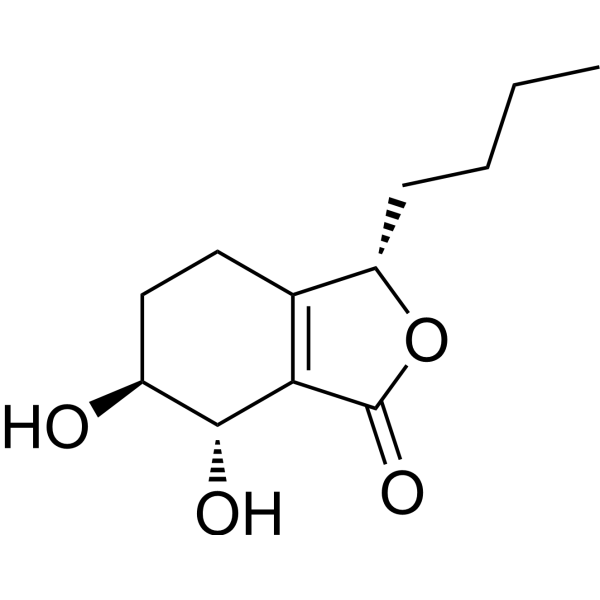
Senkyunolide N
CAS No. 140694-58-2
Senkyunolide N( —— )
Catalog No. M32423 CAS No. 140694-58-2
Senkyunolide N exhibits prostaglandin H endoperoxide synthase-I (COX-I) and endoperoxide synthase-II (COX-II)) Inhibitory activity at pH 7 and at a concentration of 250 pg ml(-1) .
Purity : >98% (HPLC)
 COA
COA
 Datasheet
Datasheet
 HNMR
HNMR
 HPLC
HPLC
 MSDS
MSDS
 Handing Instructions
Handing Instructions
| Size | Price / USD | Stock | Quantity |
| 10MG | 551 | In Stock |


|
| 50MG | Get Quote | In Stock |


|
| 100MG | Get Quote | In Stock |


|
Biological Information
-
Product NameSenkyunolide N
-
NoteResearch use only, not for human use.
-
Brief DescriptionSenkyunolide N exhibits prostaglandin H endoperoxide synthase-I (COX-I) and endoperoxide synthase-II (COX-II)) Inhibitory activity at pH 7 and at a concentration of 250 pg ml(-1) .
-
DescriptionSenkyunolide N exhibits prostaglandin H endoperoxide synthase-I (COX-I) and endoperoxide synthase-II (COX-II)) Inhibitory activity at pH 7 and at a concentration of 250 pg ml(-1) . Senkyunolide N exhibits topoisomerase-I and -II enzyme inhibitory activity at concentrations of 100, 200 and 200 microg ml(-1). Senkyolide N has insecticidal effect.
-
In Vitro——
-
In Vivo——
-
Synonyms——
-
PathwayOthers
-
TargetOther Targets
-
Recptor——
-
Research Area——
-
Indication——
Chemical Information
-
CAS Number140694-58-2
-
Formula Weight226.3
-
Molecular FormulaC12H18O4
-
Purity>98% (HPLC)
-
SolubilityDMSO, Pyridine, Methanol, Ethanol, etc.
-
SMILES——
-
Chemical Name——
Shipping & Storage Information
-
Storage(-20℃)
-
ShippingWith Ice Pack
-
Stability≥ 2 years
Reference
molnova catalog



related products
-
Hexyl nicotinate
Hexyl nicotinate (AI3 15769) is a cutaneous vasodilator and can be used in research on non-immunologic contact urticaria on the scalp, face, and back.
-
A2793
A2793 is a chemical compound.
-
2-(4-Hydroxyphenylaz...
2-(4-Hydroxyphenylazo)benzoicacid is a spectrophotometric probe that shows changes in absorption spectra upon binding to proteins and binds to bovine serum proteins.



 Cart
Cart
 sales@molnova.com
sales@molnova.com


